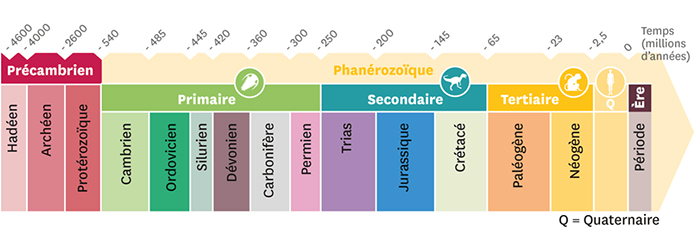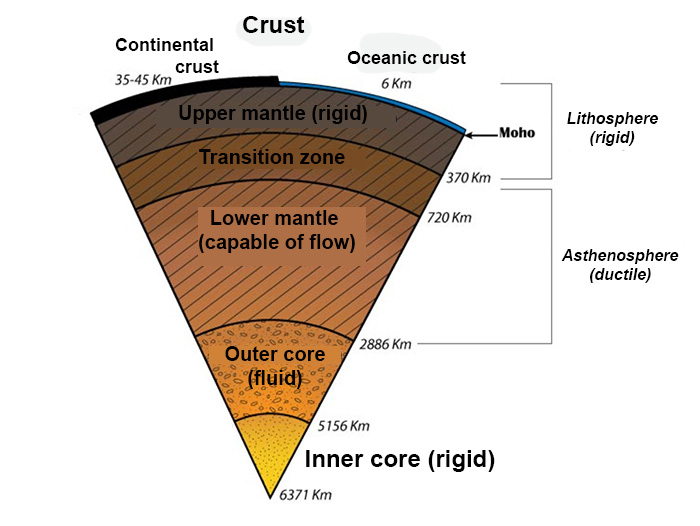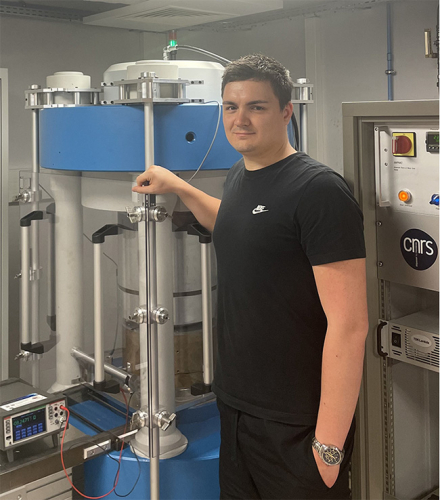Rémy Pierru's thesis, entitled " Mantle melting at high pressure and high temperature: application to early Earth dynamics”, set out to reproduce experimentally the conditions under which the Earth’s mantle melts. The Prix Haüy-Lacroix 2023 was awarded in recognition of the novelty of the experimental approach used, in particular to detect the first traces of partial melting, and the uniqueness of the experiments, most of which were carried out on the PSICHE beamline at SOLEIL.
Rémy Pierru’s thesis work, carried out at the Laboratoire Magmas et Volcans (LMV, Université Clermont-Auvergne) under the supervision of Denis Andrault and Geeth Manthilake, presents several important new results from melting experiments carried out under pressure and temperature conditions representative of the Earth’s dry mantle. Several experimental and analytical techniques have been used to properly assess how melting processes affect mantle dynamics, from the Hadean to the Phanerozoic, i.e. to the present day (Figure 1).

Figure 1: Geological time scale
© lelivrescolaire.fr
High-pressure experiments were carried out using several multi-anvil presses, as well as a diamond anvil cell (DAC), thus covering the full range of pressures in the Earth's mantle, i.e ≈2-140 Gigapascal or 20,000-1,400,000 bar (reminder: atmospheric pressure is approximately 1 bar).
The melting properties of a pyrolitic-type sample (composition of the primitive lower mantle) and two bridgmanite-type samples (mineral found at great depths ≈ 720 km) with different chemistries were measured at the LMV laboratory. Measurements were taken from pressure conditions corresponding to the end of the transition zone (around 25 GPa) to the mantle-core boundary (around 140 GPa), using a diamond anvil cell coupled to laser heating. The use of infrared lasers for heating makes it possible to reproduce temperatures of several thousand kelvin degrees (≈1500-4000K), which is sufficient to study the melting of the Earth's mantle.

Figure 2: Schematic cross-section of the Earth's structure
© encyclopedie-environnement.org
Secondly, on the PSICHE beamline new pyrolitic melting curves were measured in a multi-anvil press coupled with X-ray diffraction measurements, enabling us to propose a new phase diagram of the upper mantle up to around 30 GPa (≈800 km). The chemistry of the mineralogical and liquid phases was precisely analyzed in order to understand the evolution of the chemistry according to extent of melting, temperature and pressure.
Thanks to this thesis work, the evolution of the percentage of liquid melting and the volume proportions of minerals in melted samples as a function of temperature and pressure could be accurately determined by carrying out in situ measurements. Several techniques were used, including sample electrical conductivity (LMV), mineralogical studies using X-ray diffraction (PSICHE), and finally the detection of the fall of a rhenium sphere in a partially melted sample using X-ray contrast imaging (PSICHE). This study of the dropping of the sphere is in situ evidence of sample melting, but also provides information on viscosity changes within the sample.
The liquids obtained were compared with several very ancient Precambrian lavas that were low in silica but rich in iron and magnesium, with the aim of better understanding the origin of mantle magmas and identifying the types of liquid that can be produced by melting the upper mantle. Finally, a chemical model of the upper mantle was developed to estimate several parameters depending on the extent of melting: minerals present, chemistry, volumetric proportions, temperature and melting properties.
The implications of the results of this thesis for understanding the evolution of mantle melting throughout Earth's history, such as the source of the magmas of the major Archean magmatic provinces, go far beyond the scope of experimental petrology.

Rémy Pierru, currently post-doctoral fellow in the MP3 team (IMPMC - Sorbonne University), close to the multi-anvil press of the IMPMC.
